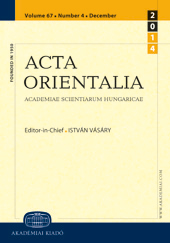Die Türkische Mission („Missio Turcica“) der Gesellschaft Jesu Im Osmanischen Ungarn
The Turkish Mission ("Missio Turcica") of the Society of Jesus in Ottoman Hungary
Author(s): Antal MolnárSubject(s): Christian Theology and Religion, The Ottoman Empire
Published by: Akadémiai Kiadó
Keywords: Society of Jesus; Catholic missions; Ottoman Hungary; Christian culture under the Ottomans;
Summary/Abstract: The study presents the history of the Jesuit missions led to Ottoman Hungary, summarising the conclusions of the author’s earlier research. After long decades of a preparative phase, the Jesuits settled down in Ottoman Hungary in 1612. In the beginnings, the mission stood under the authority of the Austrian and Roman provinces. The southern stations, Belgrade (1612–1632) and Temesvár (Timişoara, 1632–1653) belonged to the latter province. The missions of Pécs (1612–1686–1773), Andocs (1642–1684), Kecskemét (1633–1635) and the residence of Gyöngyös (1633–1682–1773) worked under the authority of the Austrian provincial. The stations counted 2–3 Jesuits, whereas in Gyöngyös 3–6 religious were active at the same time. In spite of the low number of missionaries, the activity of the Jesuits had an inestimable impact on religious and cultural life as well as on the conservation of national identity. Stations assisted in the pastoral care of the local parishes led large-scale missions well beyond the boundaries of the parish and maintained schools. In Transdanubia, the Jesuits were practically the only priests who took spiritual care of the population. The Gyöngyös grammar school was the only institution of secondary education under Turkish occupation; it was attended also by students from the Hungarian Kingdom. The fathers brought the spirit of the European Catholic reform to the Ottoman territories.
Journal: Acta Orientalia Academiae Scientiarum Hungaricae
- Issue Year: 61/2008
- Issue No: 1-2
- Page Range: 135-145
- Page Count: 11
- Language: German
- Content File-PDF

